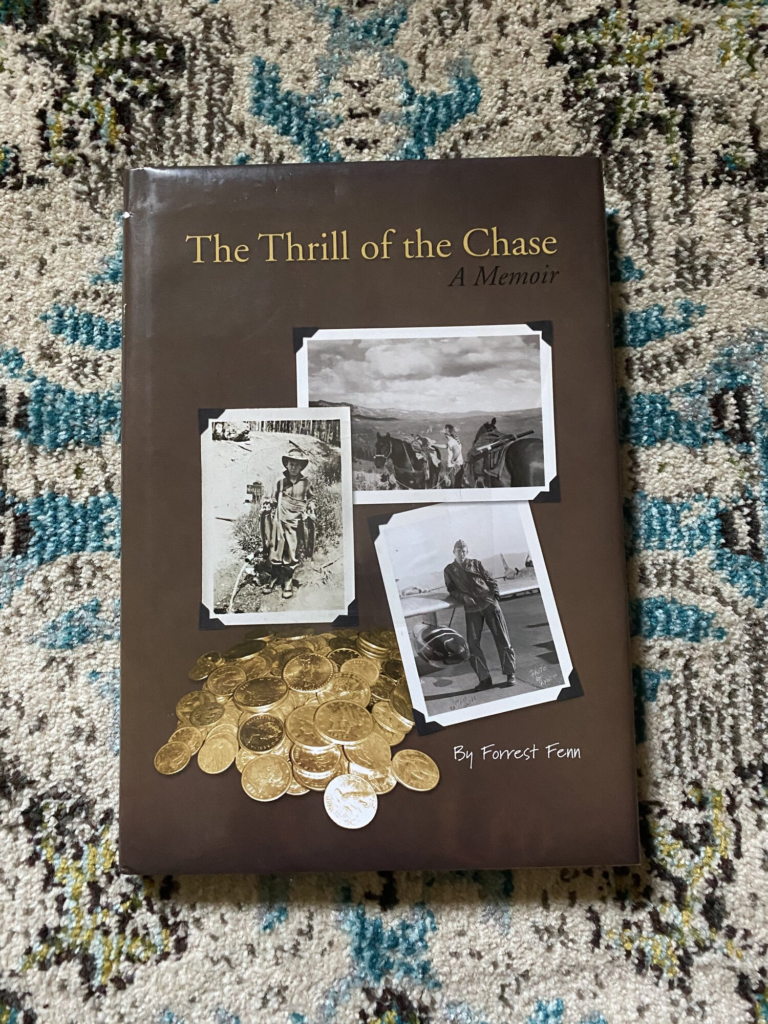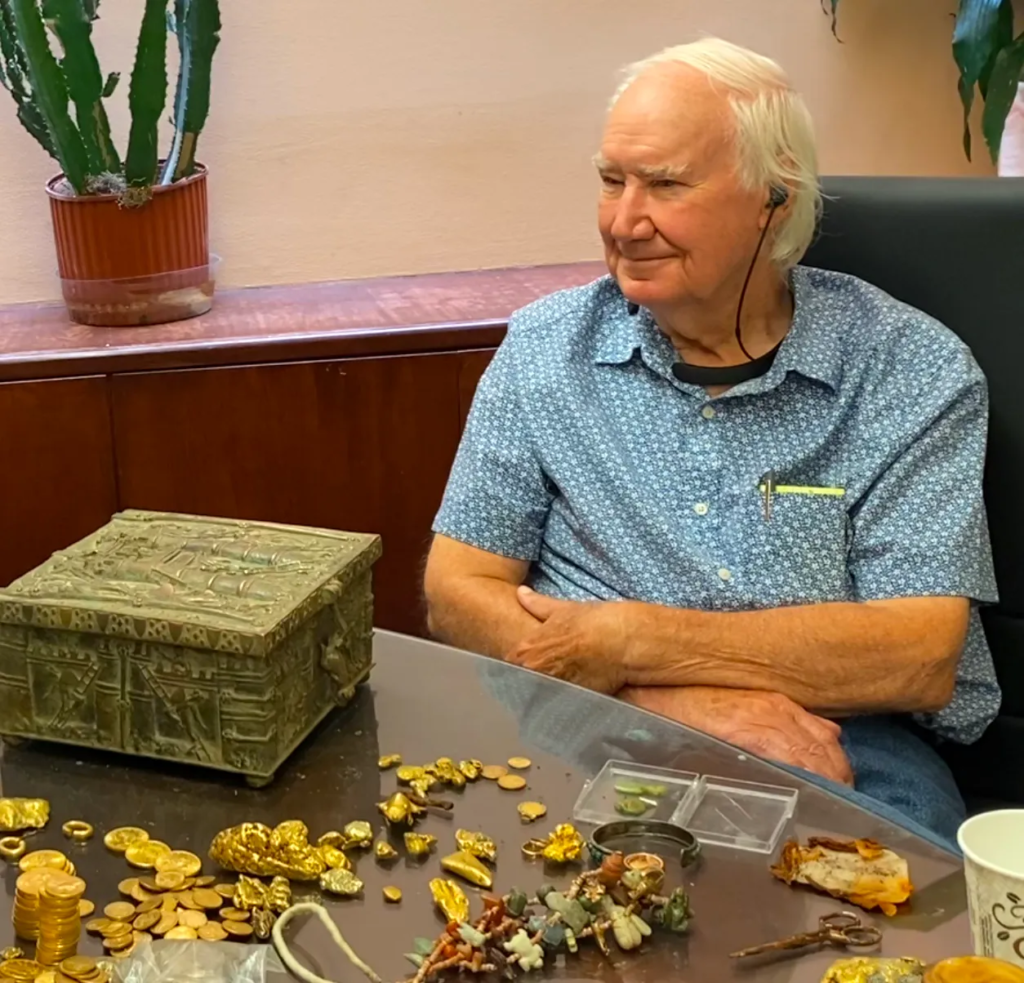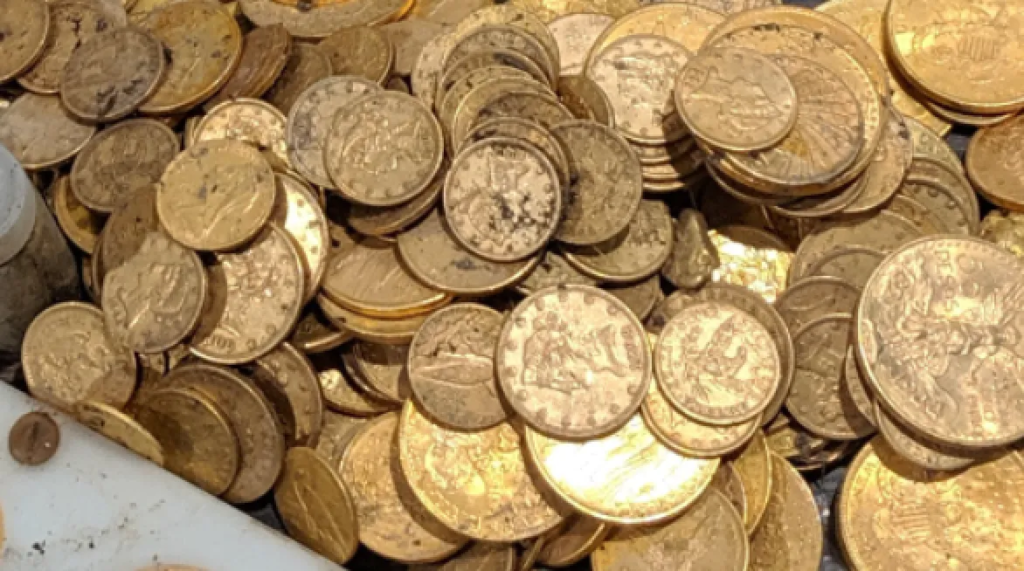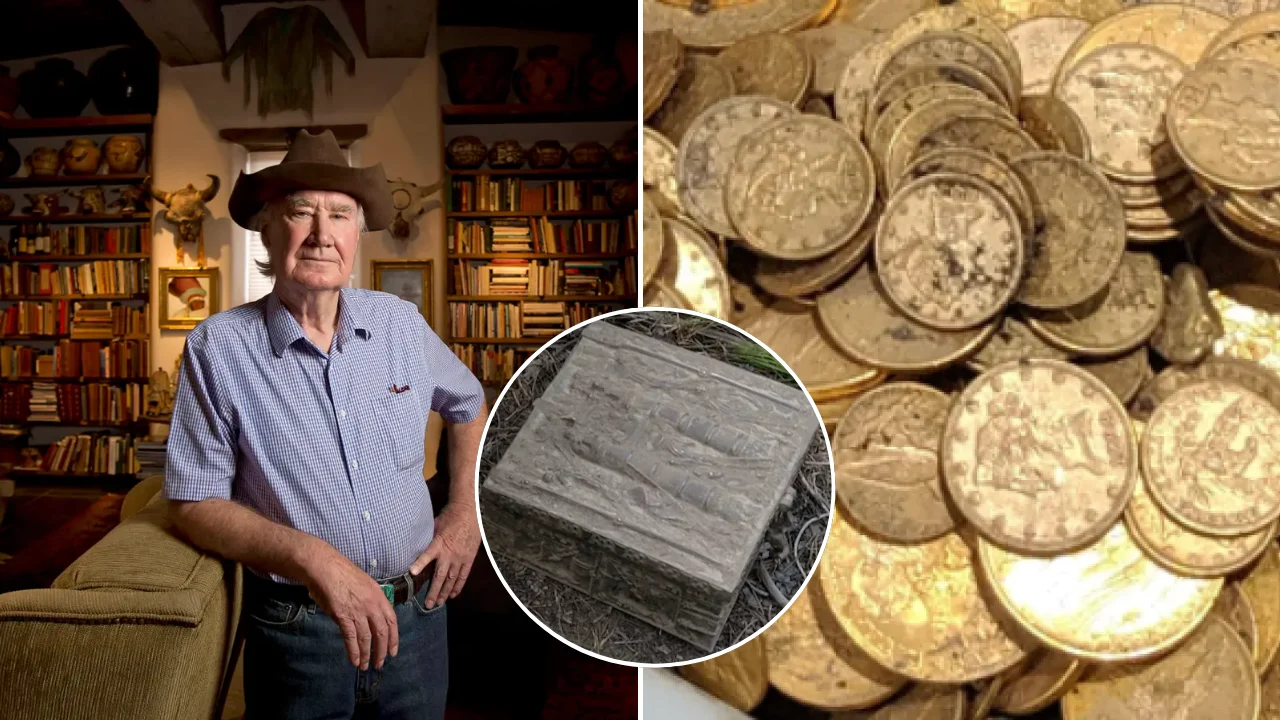In 2010, a cryptic poem appeared in a self-published memoir by a man named Forrest Fenn. The book, The Thrill of the Chase, included a bold claim: somewhere in the Rocky Mountains, north of Santa Fe, a bronze chest filled with gold, jewels, and artifacts lay hidden. Anyone who solved the poem’s nine clues could find it and keep it.
Most people dismissed it as a stunt. Others were intrigued. But some took it seriously deadly serious. Over the next decade, hundreds of thousands joined the hunt. Five of them would never return.
Behind it all was Forrest Fenn: decorated war pilot, art dealer, collector, and, perhaps most importantly, storyteller. To understand the mystery, you have to understand the man who created it.

The Making of Forrest Fenn
Forrest Burke Fenn was born in Temple, Texas, in 1930. He grew up exploring riverbanks and forests, hunting for arrowheads and fossils. His father, Marvin, was a school principal; his mother, Lillie Gay, had been a nurse. Forrest’s childhood was filled with mischief, imagination, and a deep connection to the outdoors.
In his teens, he worked odd jobs and skipped studying. He once enrolled in Texas A&M but lasted only four days. Then came the U.S. Air Force.
Fenn’s military service became a core part of his identity. He flew 328 combat missions in Vietnam in a single year, surviving multiple near-death experiences. Shot down twice, he was rescued on his second-to-last mission by a helicopter known as “Candy Ann.” His heroism earned him the Silver Star, a Bronze Star, the Purple Heart, and multiple Air Medals.
After leaving the Air Force, Fenn moved to Santa Fe, New Mexico. There, with his wife Peggy, he launched Fenn Galleries Ltd., an art dealership that attracted celebrities and collectors alike. His gallery sold Native American artifacts, sculptures, and European masterpieces. Some were legitimate. Some, reportedly, were not.
In 1988, Fenn was diagnosed with cancer and given a grim prognosis. He thought about his mortality and his legacy. He came up with an idea: he would take a treasure chest filled with gold and artifacts, hide it in the wilderness, and let others seek it. He even considered ending his life beside it, letting the treasure become his tomb.
But Fenn survived.
And the idea stayed with him.

The Thrill of the Chase Begins
Fenn self-published The Thrill of the Chase in 2010. The book was part memoir, part riddle. Tucked into the final chapters was a 24-line poem:
As I have gone alone in there
And with my treasures bold,
I can keep my secret where,
And hint of riches new and old.
Begin it where warm waters halt
And take it in the canyon down,
Not far, but too far to walk.
Put in below the home of Brown.
From there it’s no place for the meek,
The end is ever drawing nigh;
There’ll be no paddle up your creek,
Just heavy loads and water high.
If you’ve been wise and found the blaze,
Look quickly down, your quest to cease,
But tarry scant with marvel gaze,
Just take the chest and go in peace.
So why is it that I must go
And leave my trove for all to seek?
The answers I already know,
I’ve done it tired, and now I’m weak.
So hear me all and listen good,
Your effort will be worth the cold.
If you are brave and in the wood
I give you title to the gold.
The clues were poetic, vague, and frustratingly simple. He claimed the treasure—estimated to be worth around $2 million—was hidden in the Rocky Mountains north of Santa Fe, at an elevation of over 5,000 feet, and in a place an 80-year-old man could reach.
It was, by design, a mystery grounded in his own life. His summers spent in Yellowstone, his love of rivers and canyons, and even old fishing holes were woven into the legend.
Soon, tens of thousands were searching: families with maps, solo adventurers, codebreakers, scholars, and amateur sleuths. Internet forums exploded. Clue dissections. Theories. GPS coordinates. Failed missions. Obsessions.
And deaths.
A Deadly Obsession
In January 2016, Randy Bilyeu disappeared along the Rio Grande. His body was found six months later. He’d been looking for the treasure.
Then, Jeff Murphy died after falling 500 feet in Yellowstone. Paris Wallace, a pastor from Colorado, was found dead near the Rio Grande Gorge. Eric Ashby drowned in the Arkansas River. Michael Wayne Sexson and his companion got stuck in deep snow near Dinosaur National Monument. Sexson died.
Five dead. All believed to be searching for Fenn’s treasure.
Law enforcement begged Fenn to call it off. He refused. “If someone drowns in a swimming pool,” he told People magazine, “should we drain the pool or teach people to swim?”
Some accused Fenn of being reckless, of encouraging dangerous behavior. Others defended him, claiming the search inspired people to get outdoors, to reconnect with adventure and wonder.
And the hunt went on.

The Treasure Is Found
On June 6, 2020, Forrest Fenn made an announcement: the treasure had been found.
“It was under a canopy of stars in the lush, forested vegetation of the Rocky Mountains,” he wrote. “It had not moved from the spot where I hid it more than 10 years ago.”
He wouldn’t name the finder.

Three months later, Forrest Fenn died at age 90.
In December 2020, the mystery man stepped forward. Jack Stuef, a 32-year-old former journalist and medical student from Michigan, revealed himself in a Medium post and an interview with Outside magazine. He said he had kept quiet to avoid harassment and legal trouble.
Stuef claimed he found the general area in 2018 but spent months narrowing it down. In his essay, he provided scant details about the location and explained that he was burdened by student loans and planned to sell the treasure’s contents. “When I finally found it, the primary emotion was not joy but rather the most profound feeling of relief in my entire life,” he wrote. “When I got back to my rental car after the find, I put my hands on the steering wheel and bawled my eyes out.”
Still, many in the treasure-hunting community remained skeptical. Barbara Andersen, a Chicago attorney who had spent years corresponding with Fenn, filed a lawsuit against his estate seeking more transparency. Another hunter, Miriam De Fronzo, claimed a poll in a 4,000-member Facebook group showed that 86% believed Stuef’s story didn’t add up.
As of mid-2025, suspicion lingers. For many searchers, the mystery isn’t over—not until every last clue is accounted for.

The Treasure’s Final Chapter?
In 2022, Jack Stuef sold the treasure to Tesouro Sagrado Holdings, LLC, which then partnered with a Dallas auction house. That December, 476 items from the chest including gold coins, nuggets, and Fenn’s unpublished 20,000-word autobiography—were sold at auction for more than $1.3 million.
However, two notable items previously highlighted by Fenn—the gold frog and a Spanish emerald ring—were initially unaccounted for. Fenn recovered the frog from his personal collection and returned it to Stuef shortly before his death. The emerald ring, however, remains missing.
Despite the auction bringing closure to the financial side of the saga, controversy continues. The essay and Stuef’s vague details about the location have left many unconvinced. Lawsuits, theories, and suspicion continue to swirl around what should have been the final chapter.
Gold & Greed: Netflix Reignites the Chase
On March 27, 2025, Netflix released Gold & Greed: The Hunt for Fenn’s Treasure, a three-part docuseries that retraces the entire saga from Fenn’s early life and war heroism to the deaths, the discovery, and the ongoing fallout.
The series features interviews with Fenn’s grandson Shiloh Old, treasure hunter Justin Posey, and others who spent years decoding the poem. It also confronts the emotional toll on families of the deceased.
One chilling theory from Posey: the “blaze” a tree marking the exact spot was destroyed by a natural disaster. Without it, the poem’s final clue had no landmark. If true, the treasure may have sat in plain sight for years, invisible.
The Legacy Lives On
Forrest Fenn created more than a mystery. He created a modern myth.
Today, debates continue. Was it ever really about gold? Or was it about something deeper a nudge toward exploration in a world that’s mapped and measured to the inch?
Many believe there are more secrets in Fenn’s books, or perhaps another chest still hidden. Online forums remain active. New searchers emerge every year.
And just this month, in June 2025, Shiloh Old, Fenn’s grandson, hinted in an interview with Santa Fe Today that a new project inspired by Forrest’s legacy is “in development.” He wouldn’t say what—but smiled and said, “He always wanted the chase to continue.”
Whether it’s over or only just beginning, one thing is certain: Forrest Fenn buried more than treasure.
He buried a story. And the world is still trying to uncover it.

